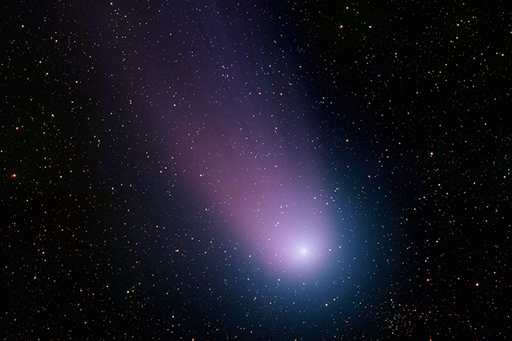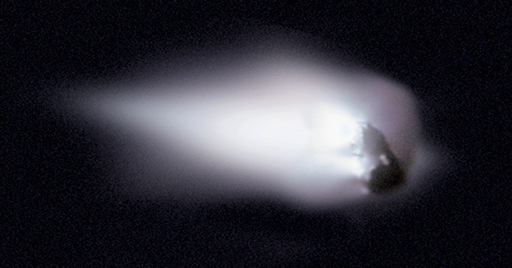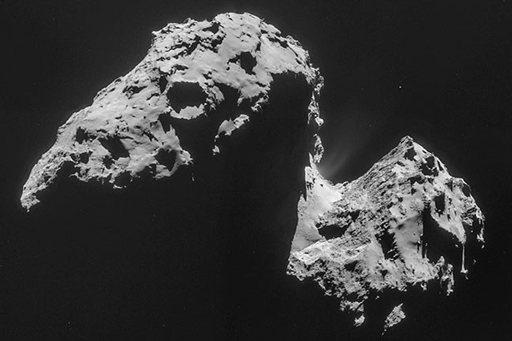4.2.6 Comets

Comets are clumps of dust and organic material bound together by ice, with an irregular shape and up to a few kilometres across.

When the European Space Agency’s Giotto mission photographed Halley’s comet in 1985, it was the first time that the irregular shape of a cometary nucleus had been observed.
In March 2004, the European Space Agency (ESA) launched the Rosetta spacecraft, with the goal of meeting up with comet Churyumov-Gerasimenko (named after its discoverers) in July 2014, flying alongside it for 18 months. This included dropping a lander (Philae) onto the comet’s surface which happened in November 2014.
Find out more about the Philae lander in the next section.

